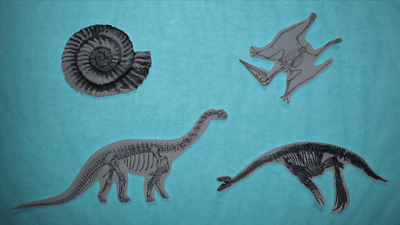New theory that cuts into the mystery of the extinction of the mammoth: Research results show that 'pollen allergy' drove the mammoth to extinction

Sense of smell reduction as factor for mammoth's and other mammals extinction. Immunoglobulins as possible markers - ScienceDirect
https://www.sciencedirect.com/science/article/pii/S295047592400008X
Pollen allergies drove woolly mammoths to extinction, study claims | Live Science
https://www.livescience.com/animals/mammoths/pollen-allergies-drove-woolly-mammoths-to-extinction-study-claims

Most populations of woolly mammoths, a representative species of mammoth, became extinct about 14,000 to 10,000 years ago, but it is known that the population on Wrangel Island in the Arctic Ocean survived until about 4,000 years ago. A study published in June 2024 revealed that the Wrangel Island population did not gradually become extinct, but suddenly became extinct due to a 'mysterious event.' According to researchers, the cause is unknown, but it is believed that the woolly mammoths, which had genetic diversity that did not cause problems enough to cause extinction, became extinct all at once due to 'some kind of random event.'
It turns out that the last population of mammoths did not go extinct gradually, but suddenly due to a 'mysterious event' - GIGAZINE

By Timothy Neesam
In a study published in the scientific journal Earth History and Biodiversity, Gleb Burshtein and his colleagues from SpringStyle Tech Design, an Israeli research institute, pointed out that the influence of pollen floating in the sky at the end of the ice age may have contributed to the extinction of the woolly mammoth. According to the researchers, global warming caused plants to flourish, resulting in a large amount of pollen being dispersed, which may have caused allergic reactions, dulling the woolly mammoth's sense of smell and preventing normal communication between individuals. The research team claims that because they were unable to distinguish each other's scents during the breeding season, the mammoths were unable to mate, which led to a rapid decline in their population and ultimately their extinction.
In addition, the sense of smell in animals plays several essential roles in life, and it is thought that for the woolly mammoth it played a variety of important roles, including finding a mate, finding food, determining direction while moving, and detecting and escaping predators. If the woolly mammoth's nose was clogged with hay fever, it may have been impeded in some of the functions necessary for survival.
One way to test whether mammoths did in fact suffer from allergies is to examine their stomach contents for allergy-causing plants or pollen. Burstein and his colleagues found that some mummified mammoth tissues and the preserved plant matter around them had pollen embedded in them, which could help identify past irritants.
To determine whether pollen actually caused the mammoth's allergic reaction, we need to look for immune system proteins that the body produces during an allergic reaction. The image below shows a fossilized mammoth trunk that was actually used to collect proteins in the study. As a result, we were able to successfully detect immune protein peptides from the trunk and intestines of the woolly mammoth. Furthermore, by examining the feces of fossilized mammoths, we may be able to determine whether the mammoths suffered from severe hay fever.

On the other hand, Vincent Lynch, an evolutionary biologist at the University of Buffalo, said, 'The idea that allergies played a major role in the extinction of the mammoths seems pretty far-fetched. I don't know how to prove it.' According to Lynch, ancient DNA samples show that 'woolly mammoths lost the ability to smell certain plants,' but even if pollen actually affected their sense of smell, further research is needed to confirm whether that was the cause of their extinction. 'We still believe that a combination of environmental factors and human influences was the cause of the extinction of the mammoths,' Lynch said.
Related Posts:






